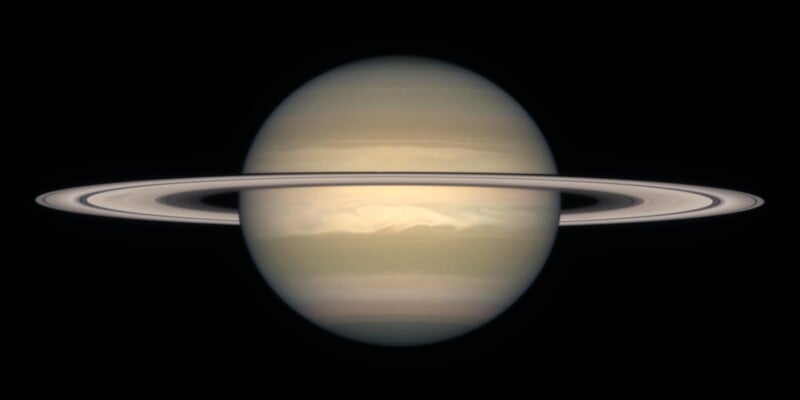Saturn’s Rings Are Disappearing: Photograph Them While You Can
![]()
Astrophotographers are going to want to photograph Saturn’s rings sooner rather than later since they’re going to disappear in more ways than one after this summer.
Saturn’s rings are going to become more difficult to see soon. The planet’s tilt will soon make the rings basically invisible from the perspective of Earth but not only are angles going to be an issue, new research shows that they are also literally disappearing.
The most pressing issue involves angles. Right now and through August, Saturn’s rings are tilted down at a 9 degree angle at opposition, which makes them very clear and easy to see. However, next year the tilt will move them to just 3.7-degrees. By 2025, they’ll almost disappear entirely from Earth’s view as the edge of the rings will be head-on from this perspective.
After that, it will be an incredibly long time before the rings are visible again and even longer until they return to the state they are in right now. They’ll continue to incline to their maximum of 27-degrees by 2032 before working back slowly over the course of the next decade-plus.

Luckily, before all that happens, Saturn’s rings will first become their brightest and most visible in the next month. As reported by Sky at Night, Saturn will reach opposition — the point where it lies directly opposite the Sun relative to Earth — and therefore be at its brightest and highest on August 27, 2023. That night, and the nights around it, will provide astrophotographers with the best chance to capture the rings from Earth.
If Saturn’s pattern remained constant, it would eventually return to this ideal photographing period, but not only will it be many years before that happens, there is evidence they are disappearing for good, CNN reports.
In a series of studies that use Cassini satellite data, scientists believe that Saturn’s rings are likely to start fading. Even though the rings are relatively young, cosmically speaking, there is evidence in the Solar System that planetary rings are not everlasting and actually fade somewhat quickly in the grand scheme of the universe.
“We have shown that massive rings like Saturn’s do not last long,” Paul Estrada, research scientist at NASA’s Ames Research Center in Mountain View, California, and a coauthor of all three studies, said in a statement earlier this year.
“One can speculate that the relatively puny rings around the other ice and gas giants in our solar system are left-over remnants of rings that were once massive like Saturn’s. Maybe some time in the not-so-distant future, astronomically speaking, after Saturn’s rings are ground down, they will look more like the sparse rings of Uranus.”
Scientists are still evaluating the data to determine the actual age of Saturn’s rings, which will also help them understand when they might fade away, but there is evidence that their current brightness is peaking and it will only be downhill from here — granted, that ride down might take millions of years.
Image credits: NASA